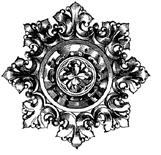
On Death & Dying & Terri Schiavo
GUEST COLUMN
I was performing an autopsy when Terri Schiavo died.
I am a pathologist. Not a forensic pathologist, so I don’t get involved legal cases. I’m just a general pathologist working in a hospital laboratory, signing out cases, interpreting lab data and, occasionally, doing what are known as “medical” (as opposed to forensic) autopsies. In this case the patient — we’ll call him Mr. Goodpasture — was an elderly gentleman who had suffered from kidney disease and severe emphysema for many years. He had been admitted to my hospital about a month previously with severe worsening of his kidneys to the point where they shut down completely and he went on dialysis. In addition, his emphysema — which already required supplemental oxygen — got worse; he stopped being able to breathe on his own, and he had to be intubated and put on a ventilator. Mr. Goodpasture spent a month in the intensive care unit, on a ventilator, getting dialysis as well as a host of other aggressive high-tech therapies in the hopes that he would regain some kidney function, and regain enough lung function to be taken off the ventilator and breathe on his own. Throughout this time he was obtunded and unresponsive. After a month of very aggressive therapy it became clear that Mr. Goodpasture was not going to improve, ever get off the vent, or even regain consciousness, and his children requested that his ventilator be turned off. His physicians concurred. The vent was disconnected and he was put on “blow by” oxygen only. He died shortly thereafter. His immediate cause of death was respiratory failure due to severe chronic obstructive pulmonary disease, exacerbated by end-stage renal failure. His manner of death was natural.
The Catholic Church does not teach now, and has never taught, that every heroic and extraordinary measure must be taken to preserve life for as long as humanly possible. Pope John Paul II did not teach that in his March 2004 address, “On Life-Sustaining Treatments and the Vegetative State.” The Catechism does not teach it; in paragraph 2278, the Catechism states, “Discontinuing medical procedures that are burdensome, dangerous, extraordinary, or disproportionate to the expected outcome can be legitimate…. One does not will to cause death; one’s ability to impede it is merely accepted.” In 1981 the Congregation for the Doctrine of the Faith promulgated its Declaration on Euthanasia, which reaffirmed the traditional Church teaching distinguishing between “ordinary” and “extraordinary” means of prolonging life. This can at times be a difficult distinction, and evaluating different treatments with different risks, hazards, pains, costs, and so forth, can be a fairly technical task, requiring the help of physicians.
You May Also Enjoy
Disability advocates like those at Not Dead Yet and Second Thoughts find their own lives well worth living and filled with dignity.
This interesting sin, based on Proverbs 6:18, means embracing evil enthusiastically instead of being drawn into it reluctantly.
Have professors at the University of Louvain lost sight of the abysmal difference between a sin and a non-moral evil — such as poverty, sickness, a natural disaster?

